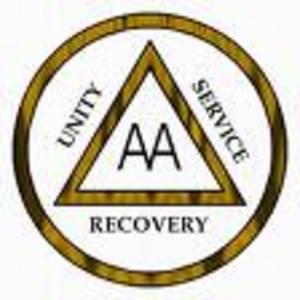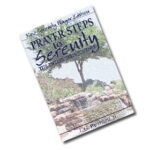I’ve been around the program of recovery known as AA since 1988.
In that time I’ve been exposed to all kinds of sponsors – the “Nazi” kind who won’t budge on anything and are hard-core, the soft, “sweet as pie” type whose answer to everything is the Serenity Prayer, and a good mix of in between.
Some people mistakenly assume that a sponsor is supposed to feed and clothe them, loan them money, take them into their home and support them, and basically be available 24 hours a day.
This neediness stems from being alcoholic.
If we overdo any of these tasks when we sponsor someone we’re not doing them any favors. If we coddle them it could kill them because it just encourages them to keep doing the irresponsible behavior.
When you first start working with a newly sober person in recovery, the first thing you need to do is establish some ground rules such as not calling after a certain time if that applies and discussing what a sponsor is and is not.
On rare occasions a sponsor may take a sponsee into their home but that generally is not a good idea except in extreme circumstances and only for a limited time.
More often than not the sponsee takes advantage of the sponsor and things do not end well.
Sometimes the sponsee will use this as an excuse to go back out and drink.
Next, is taking the sponsee through the 12 Steps of AA. For the First Step, it has been suggested that the sponsor should have the sponsee read Bill’s Story in “The Big Book” or the textbook of AA and write about how they relate to his drinking and living. (Source: Alcoholics Anonymous).
Step 2 involves having the sponsee write about how their life is unmanageable, according to one member of the fellowship.
When Step 3 is taken these days it is highly encouraged that the sponsor and sponsee get on their knees together and say the Third Step Prayer in the Big Book or the “12 and 12,” also known as Twelve Steps and Twelve Traditions, the companion book to The Big Book.
When you give the Step 4 assignment to your sponsee, give them less than a month to a month to work on it, but no longer because sponsees tend to drag their feet and put this step off. Be sure to tell them to work this step out of The Big Book like it is diagrammed and not confuse them with any Hazelden books or any other outside literature. By the latter, I mean any workbooks or books that don’t have anything to do with recovery from drinking.
Step 5 involves having the sponsee meet you at your house or theirs or in a private place and having them go over the 4th step with you, which is essentially their life story. But if it doesn’t turn out to be that way, have them tell you their life story. Make sure before they come over you have blocked out several hours so neither of you are rushed. After taking this step the sponsee typically goes home and does the follow-up step work in the Big Book which involves praying and meditating regarding the Step 5 they just did.
Step 6 involves the sponsee saying the Sixth Step Prayer in the Big Book, as does Step 7. Have them also make a list of their fears and character defects.
Then the sponsee starts on Step 8 which is a list of people they have harmed. Contrary to what some think, making amends is not an apology, but making a change. Some people say that whoever is listed in the Step 4 inventory will also be on the Step 8 list, but I have not found that to be totally true. The sponsee might have a resentment against a person, for example, but not necessarily owe that same person an amend. This has been my experience, also.
Step 9 is the actual amend-making. It is important the sponsee has taken each of the steps so far in order, with no short cuts or dishonesty. If you and the sponsee are comfortable that that is the case, then the sponsee begins making their amends. The sponsee does not go to extremes trying to seek people to make amends to out and, most importantly, as the step states does not making any amends that would harm themselves or the other person. When making the amends, part of what is involved is the sponsee asking the person they’re making the amends to this question: “What can I do to repair harms done?” Using common sense, the sponsee takes on the task of doing what the other person they harmed asks them to do – within reason. As the Big Book states, we do not grovel before anyone.
Step 10 is an on-going process, as Step 9 is. Step 10 involves taking a personal inventory daily and when we were wrong promptly admitting it. This is a written inventory taken by the sponsee nightly by himself. At the end of the day, the sponsee asks themselves if they harmed anyone and what they did right as well as what they could do better.
Step 11 is another one of those “on-going” steps. It involves seeking through prayer and meditation to improve our conscious contact with a Higher Power. There are all kinds of ways to meditate and you can encourage your sponsee to investigate different books on the subject at the library or by speaking to others in AA who have had the experience.
Step 12, the last step, brings the sponsee full circle. Now, having gone through the steps and continuing to work on some daily, the sponsee, with at least a year of sobriety required at this point, carries the message to another alcoholic in meetings and outside of meetings as they run across people who might ask for help. However, never do we seek people out with unsolicited help. We only offer help if it is requested by us.
Hopefully, you and your sponsee by now have a deep, rich relationship that is based on trust and friendship but at the same time each of you have learned a lot from the sponsor/sponsee relationship, one that your sponsee will in turn pass on to the next suffering alcoholic.




